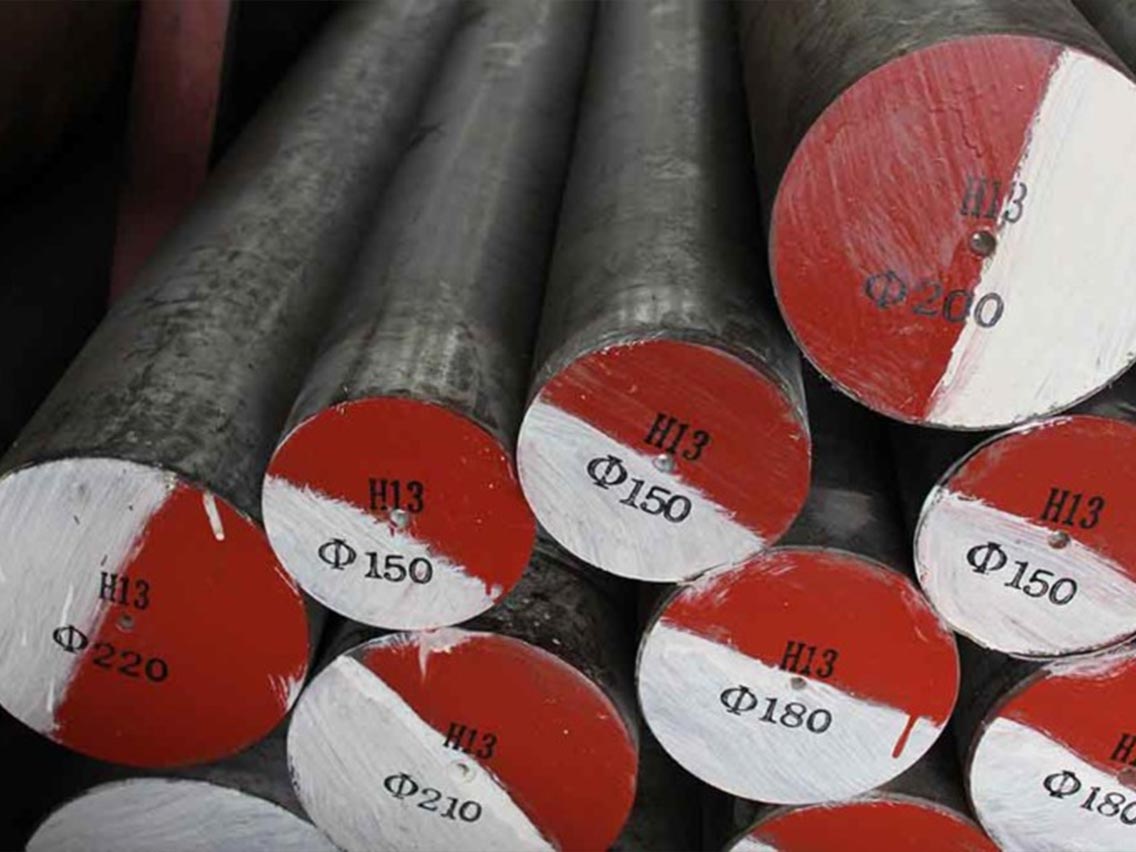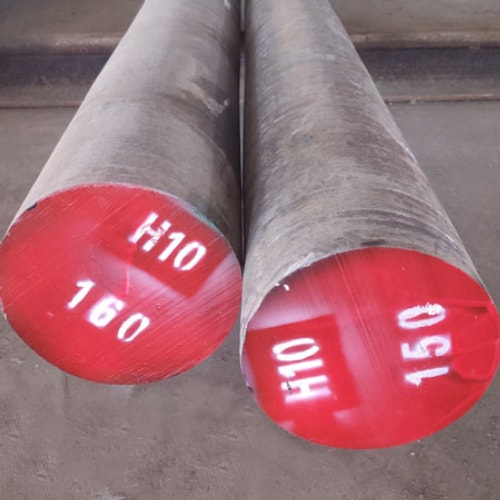H13/1.2344 Steel
H13/1.2344 Steel
The H13/1.2344 steel is primarily used for manufacturing high-demand hot-working molds, such as die-casting molds for aluminum, magnesium, and zinc alloys, hot extrusion molds, and hot forging molds. It exhibits excellent thermal strength, thermal fatigue resistance, and toughness, maintaining superior mechanical properties at higher temperatures. Additionally, the H13/1.2344 steel is suitable for making plastic molds that require high wear resistance and molds that endure significant impact loads.
Product Parameter Table
Chemical composition :
|
C |
Si |
Mn |
P |
S |
Cr |
Mo |
V |
|
0.32-0.45 |
0.8-1.25 |
0.2-0.6 |
≤0.03 |
≤0.03 |
4.75-5.5 |
1.1-1.75 |
0.8-1.2 |
Mechanical properties :
|
Hardness,HB |
229 |
|
Tensile strength,Mpa |
1200-1590 |
|
Yield strength Rp 0.2,Mpa |
1000-1380 |
H13/1.2344 steel, due to its exceptional wear resistance, high strength, stability at high temperatures, and excellent machinability, is widely used in mold manufacturing. It is particularly suited for producing molds and mechanical parts that endure high loads, such as automotive components, appliance housings, and medical devices. It can be employed in the manufacture of forging dies for die-forging hammers, hot extrusion molds and mandrels, molds for forging press machines, inserts for precision forging machines, and die-casting molds for aluminum, copper, and their alloys.
Application
1. In the field of die-casting molds for aluminum, magnesium, and zinc, H13/1.2344 steel demonstrates outstanding heat resistance and wear resistance, ensuring that the molds maintain their shape and do not deteriorate under high temperatures and pressures over extended periods. Additionally, it is used to create extrusion molds for aluminum and brass, bushings, mandrels, pressure pads, driven parts, backing plates, mold casings, mold supports, and adapter rings for copper and brass extrusion.
2. H13/1.2344 steel plays a significant role in the manufacture of plastic molds. Due to its good polishing and machining properties, the molds can more easily achieve the required precision and surface finish during the manufacturing process, thereby enhancing the overall quality and service life of the molds. It is suitable for producing various plastic products, such as household appliance housings and automotive parts.
3. H13/1.2344 steel is also adopted by the aerospace industry due to its high strength and toughness. It is used to fabricate certain structural components on airplanes and engines that need to withstand high temperatures, high pressures, and intense mechanical stresses.
4. H13/1.2344 steel is utilized in the manufacture of hot stamping and forging molds, split hot upset molds, clamping molds, hot punching, piercing, and trimming tools. These tools operate under high temperatures and pressures, necessitating materials with exceptional heat resistance and wear resistance. The performance characteristics of H13/1.2344 steel make it an ideal choice for the production of these tools.
In summary, H13/1.2344 steel, with its superior wear resistance, high strength, stability at high temperatures, and good machinability, has a wide range of applications in mold manufacturing, the aerospace industry, and the manufacture of hot stamping and forging tools.
Customer Testimonials
Excellent Heat Resistance
“H13/1.2344 steel handles high temperatures extremely well, making it perfect for hot work applications like die casting and forging.”
Superior Toughness and Strength
“This steel is incredibly tough and durable. We use it for high-stress applications, and it consistently withstands heavy impact and pressure.”
Good Wear Resistance
“H13/1.2344 steel resists wear even under extreme conditions. It helps extend the lifespan of our tools and reduces downtime for replacements.”
Easy to Harden and Maintain
“We appreciate how easy it is to heat treat and harden H13/1.2344 steel. It maintains its strength and stability over time, making it a reliable choice.”
Ideal for High-Performance Tooling
“This steel is our top choice for extrusion dies, die-casting molds, and other high-performance tooling. It delivers consistent results every time.”








